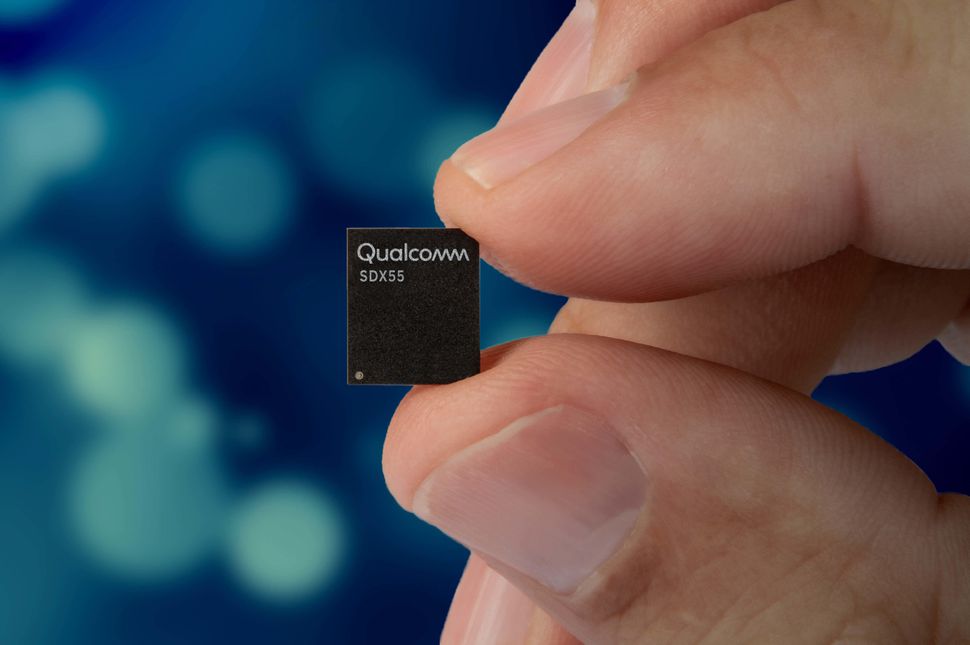 EMERGING TECH
EMERGING TECH
 EMERGING TECH
EMERGING TECH
 EMERGING TECH
EMERGING TECH
The first 5G-compatible smartphones are still weeks from launching, but Qualcomm Inc. is already looking to the second generation of devices.
The company today debuted a new modem chip designed to provide ultrafast connectivity for tomorrow’s handsets. The Snapdragon X55 (pictured) is a follow-up to Qualcomm’s original 5G modem, the X50, which is expected to power practically all first-generation 5G phones.
The term 5G covers a broad set of mobile and carrier technologies that promise to enable wireless connections up to 100 times faster than what current cellular networks support. Qualcomm, which dominates the market for mobile modem chips, is a leader in this area.
“The new X55 modem has every bell and whistle you’d want for smartphones, tablets, cars and even PCs,” said Patrick Moorhead, president and principal analyst at Moor Insights & Strategy.
It’s based on a seven-nanometer architecture that makes it much more powerful than the X50. The chip supports download speeds of up to 7 gigabits per second, a 40 percent improvement over its predecessor. Qualcomm is also promising maximum upload speeds of 3 gigabits per second, though connections will be slower in practice due to factors such as cellular interference.
Most consumers will also have to wait a while before they can access the benefits of 5G. Carriers have only recently started rolling out the technology, which means even new smartphones have to support older cellular standards.
The X55 will make it easier for handset makes to provide this compatibility. According to Qualcomm, the chip supports several generations of wireless technologies going back to the 1990-era 2G standard. This will remove the need for manufacturers to incorporate older modems into their devices alongside the X55, which should lower costs and free up space.
Another new feature in the X55 is envelope tracking. It enables the chip to draw the exact amount of power necessary to support a given connection, which avoids energy waste. Power efficiency will be a particularly big priority in 5G devices since they’ll transmit data at higher frequencies that require more energy.
The X55 is designed to be used with a new antenna module that Qualcomm also debuted today. Referred to as the QTM052, it’s a penny-sized chip that’s smaller than the company’s previous 5G antenna and will work in more countries.
Most importantly, the module will support the so-called millimeter spectrum band. Whereas some 5G antennas and existing carrier networks are limited to frequencies of 6 gigahertz or lower, the QTM052 can send signals that are several times more powerful, which should translate into higher speeds.
Qualcomm will start delivering X55 to handset makers in the coming months. It expects the modem to start shipping in devices by the end of the year.
THANK YOU